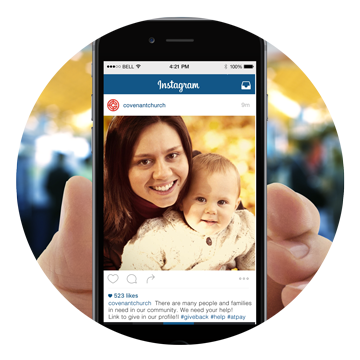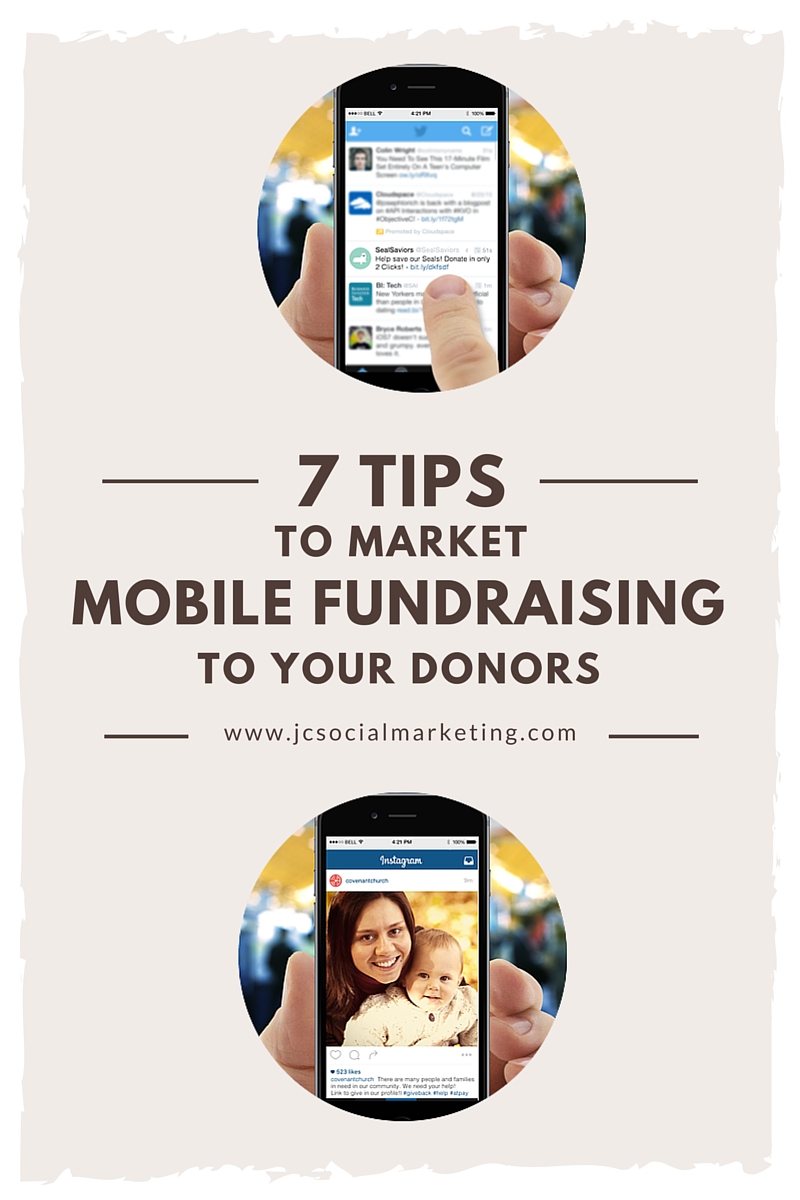 Guest post by Wauker Matthews
Guest post by Wauker Matthews
Everyone everywhere is talking about what an incredible tool mobile fundraising can be for nonprofits.
Notice how I said, “can be,” not “is”?
That was 100% on purpose.
Mobile fundraising can be great for your nonprofit, if you put in the time and effort it takes to market your campaigns properly.
As with any tool you use, fundraising and otherwise, you only get out of it what you put into it.
That being said, it’s not always about working harder. It’s about working smarter. One of the keys to working smarter is marketing wisely.
When you keep the following 7 tips in this article in mind, you’ll be well on your way to marketing a highly successful mobile fundraising campaign.
For the full inside scoop on mobile fundraising, take a look at @Pay’s Essential Guide to Mobile Fundraising.
Here’s a sneak peek at what we’ll be looking into today:
#1. Get all of your ducks in a row.
#2. Ask for help from your closest supporters.
#3. Ease concerns about safety.
#4. Make the most of social media.
#5. Don’t forget about traditional marketing avenues.
#6. Hit refresh often.
#7. Remember to thank your donors.
More on what actually works in marketing in general: here in this article.
#1. Get all of your ducks in a row.
Before you can market your mobile fundraising plans, you have to make sure that you’re ready for mobile first.
When you’re preparing to launch and market your mobile fundraising campaign, you need to make sure:
- Your nonprofit’s website loads just as well on a mobile device (smartphone or tablet) as it does on desktop or laptop computer.
- The buttons on your mobile donation page are large enough and easy enough for a user to press without pinching or scrunching to expand the page on their phone.
- Your text-to-give platform performs seamlessly.
- The donation buttons you’ve incorporated in your mobile email function well on mobile.
- Your QR code leads to the proper mobile webpage when scanned.
To make sure all of your ducks are in a row, test all of these aspects of your mobile fundraising campaign before you extend any invites to your donors.
A good example of a well-crafted mobile fundraising email looks a little something like this:
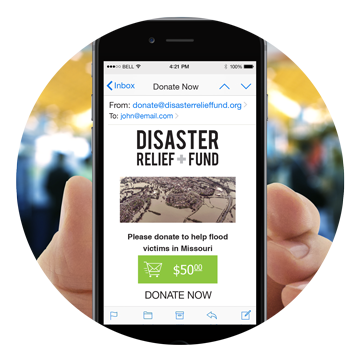 Points of note:
Points of note:
- The buttons are large and brightly colored.
- The email loaded in a platform-specific manner.
- The text isn’t overwhelming, nor is the image.
This email is ready to be sent out to past and potential donors.
Not only should you be working out the kinks in your mobile campaign itself, you should also be strategizing the different ways you’re going to get the word out.
You should be planning your next event with mobile fundraising in mind.
This means:
- Getting the word out before the event to make sure people have their phones with them.
- Ensuring there’s time during the event to talk about your mobile fundraising plans.
- Having a plan in place for how you’ll follow up with your new donors after the event.
Preparing well in advance for the initial unveiling of your mobile fundraising campaign will get the ball rolling in the right direction.
Major Takeaway: To get all of your ducks in a row, you must make sure that you’re ready for mobile and that your events are lined up with mobile in mind.
#2. Ask for help from your closest supporters.
In order to have a highly successful mobile fundraising campaign, you have to ask for help.
“What does asking for help look like, though? And whom do we ask?” You’re saying to yourself right about now.
When you’re looking for supporters to ask for concrete help, look no further than:
- Your board members.
- Your recurring gift donors.
- Your cause’s advocates.
- Your organization’s volunteers.
These people have a vested interest in your organization. They want you to succeed in your mission.
Help them help you.
Provide your supporters with the tools it takes to market your mobile fundraising campaign.
Here are the steps to take:
A. Let them test out your platform first, before you roll it out for anyone else. Bonus: giving them this special privilege will make them feel as though
they’re a part of an exclusive club–which they kind of are!
B. Then, instruct them to let the people in their respective social networks know about your mobile fundraising campaign.
C. They’ll tell their friends, families, and coworkers to try out your text-to-give, your mobile donation page, and more.
Because it’s coming straight from someone they already trust, these potential new donors will be much more willing to give it a whirl.
And with any luck, after they’ve donated once through your new mobile fundraising campaign, they’ll become recurring donors. Or they’ll look into volunteering with your organization.
Either way, the chances have increased that they’ll stay involved with you in some way.
Major Takeaway: Getting your organization’s most loyal supporters on board with your mobile fundraising campaign is one of the best ways to expand your network and market your plans.
#3. Ease concerns about mobile fundraising safety.
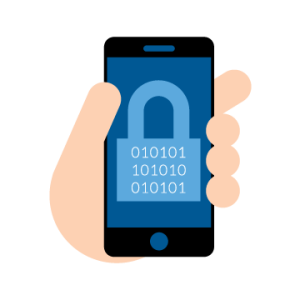
As our society advances technologically (quite quickly, at that), we find that safety and security are greater and greater issues.
That’s why it’s vitally important that you alleviate your donors’ fears about identity theft and fraudulent charges early on in your mobile fundraising campaign.
Part of easing donors’ concerns is picking a platform that:
Is PCI-compliant. PCI-compliance means that a business or nonprofit organization adheres to the strict standards of the Payment Card Industry.
Uses tokenization. Tokenization is the process of translating sensitive information into “tokens” that can’t be deciphered by anyone but the intended payment processor.
Verifies identity. This one is a little more up to interpretation, but generally the way a mobile fundraising platform would verify identity is through a second form of identification, like an email address or a phone number.
Once you’ve made sure all of those points hold true for your mobile fundraiser, you should have no issue calming even your most anxious donors.
The other part of reassuring yours donors is making sure that they know about your platform’s safety measures.
To make sure they’re well aware of all of the precautionary steps, you can:
- Send out an informational email blast focused on the security of mobile donations.
- Pass out flyers at your next event with information about mobile donation safety.
- Include a PCI-compliance level logo on your mobile donation page.
- Provide informative links about donation security on your social media sites.
- And more!
As with most things, you’ll probably need to inform your donors in more than one way about your mobile fundraising campaign’s security measures.
Major Takeaway: Make security a top priority to encourage more donors to give on the go.
#4. Make the most of social media.
If you’re on this blog, you’re probably already aware of the power of social media.
But have you truly tapped into its full potential?
Having a curated social media presence can mean the difference between 15 people showing up to your event and over 1,000 attendees showing up.
It could mean the difference between a few small text donations trickling in and your nonprofit’s inbox being so full it could burst.
So how do you optimize your social media channels to facilitate your mobile fundraising campaign?
We’ve got some surefire tips and tricks for the big social media platforms:
Facebook.
Images are infinitely more shareable than text alone, and infographics are some of the most widely shareable pieces of content on the internet.
When you’re crafting your next Facebook post, make sure you include an image, video, or infographic to make your content more engaging for your followers.
To extend your reach even further, be sure to interact with your followers’ pages by liking and sharing relevant content.
Take a cue from this church, and share an album of pictures that explains in detail how to donate via text:
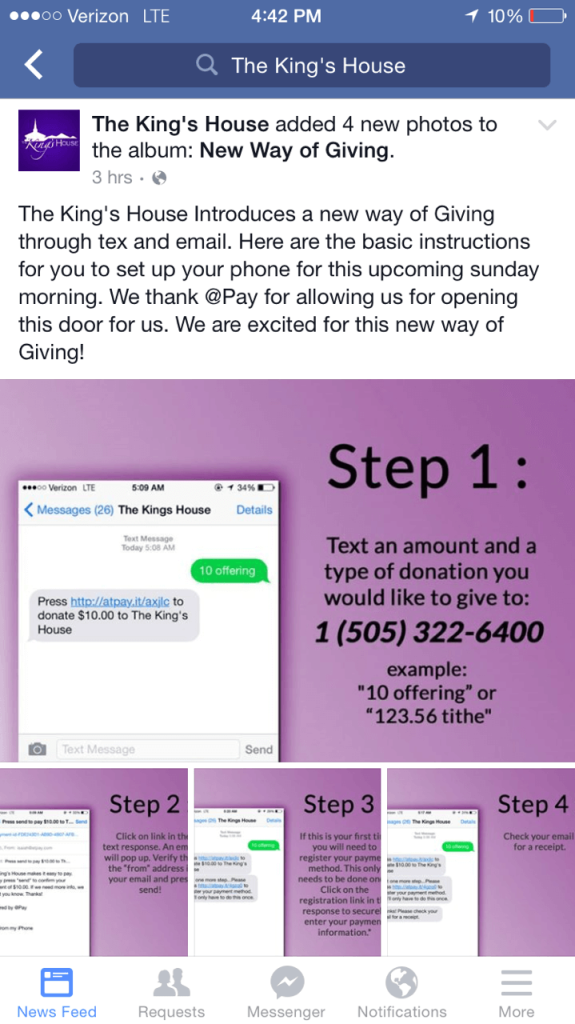
Twitter.
You only have 140 characters to spare for each tweet that you create, so use them wisely.
Make sure you include a clear call-to-action as well as a link to your mobile donation page, just like this SealSaviors nonprofit:
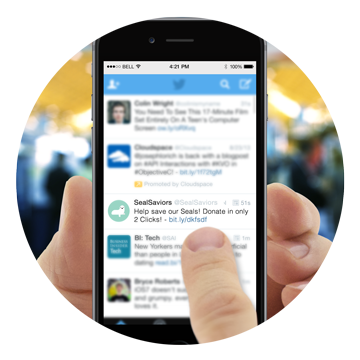
Instagram.
Much like Facebook, Instagram is a very visual medium.
To get the most out of it, you need to focus on curating images that are representative of the work you do, aesthetically pleasing, and meaningful.
Since you can’t include a link within your individual posts, you should be sure to allude to the link in your bio, just like this church did for their campaign:
Tumblr.
Your nonprofit can save its extensive updates for Tumblr, as it’s a site that supports long-form content.
When you’re posting updates, make sure to include “tags” so that your posts are more searchable.
Snapchat.
Snapchats are a more instantaneous form of social media, so it’s best to save this for live events where you want to update your donors and members that aren’t physically present.
You can also use this app to update your donors on the progress of your latest project.
Google+.
To get the most out of Google+, you should be actively seeking out new connections and sharing content that’s relevant to your nonprofit.
Keep in mind that your target audience with Google+ is adults who are 45-60 years old.
LinkedIn.
LinkedIn is the most professionally-oriented social media on this list.
When you’re crafting posts for LinkedIn, make sure that your content is polished and professional.
Also be conscious of the fact that some users have their notifications set so that they will receive an email each time you visit their profiles.
You should also be aware that there are optimal times to post on social media (however, make sure to take a look at your own analytics and insights to find the best time to post to YOUR audience):
- Facebook. 1-3 PM on weekdays is the best time to post.
- Twitter. 5 PM on any given workday is the peak time to tweet.
- Instagram. Monday and Thursday work best.
- Tumblr. Weekends and nights are primetime for posting.
- Snapchat. You’ll get the most story views after 10 PM.
- Google+. Wednesday morning at 9 AM is the best time to post.
- LinkedIn. Midweek from 5-6 PM is the optimal time to share.
Don’t feel pressured to keep up with every single social media site out there (especially since it seems as though there’s a new one that crops up every other day). It would be exhausting and an unwise use of your nonprofit’s time.
What’s important is that you focus your energies on one, two, or three social media sites that best fit your nonprofit’s mission (as well as the social media sites where the majority of your donor base is).
Make those sites your priority, and you’ll start to see engagement increases in no time.
Major Takeaway: If you strategize and use social media to its fullest, you’re sure to see a positive impact on your mobile fundraising campaign.
#5. Don’t forget about traditional marketing avenues.
As Adam Weinger of Double the Donation said in an earlier post, “Fundraising doesn’t exist in a vacuum.”
In other words, you must be willing and able to combine your online (and mobile) and offline efforts to attain success.
Here are some examples of traditional marketing avenues:
- Flyers
- Magazines
- Posters
- Direct mail
- Phone calls
- Door-to-door appeals
In order to have the most successful mobile fundraiser possible, you’ll need to supplement your online and mobile efforts with other, more traditional methods of marketing.
It can be easy to ignore these “old-fashioned” methods in favor of fresher, newer means of communication.
But you never know how potential donors prefer to be reached.
Perhaps your donors prefer phone calls over emails.
Maybe there are some members of your organization that really love in-person visits.
You never know who might pick up one of your flyers or pass by one of your posters on a daily basis.
In any case, it can’t hurt to diversify your approach.
Major Takeaway: Don’t leave phone calls and direct mail in the dust just because your fundraiser has gone mobile.
#6. Hit refresh often.
No, I don’t mean hit refresh on your email inbox often. Although, admittedly that is an addictive habit.
Hitting refresh means letting your donors know about your mobile fundraising plans more than once.
Imagine you’re a donor. You spot an advertisement for a text-to-give campaign, like this one:
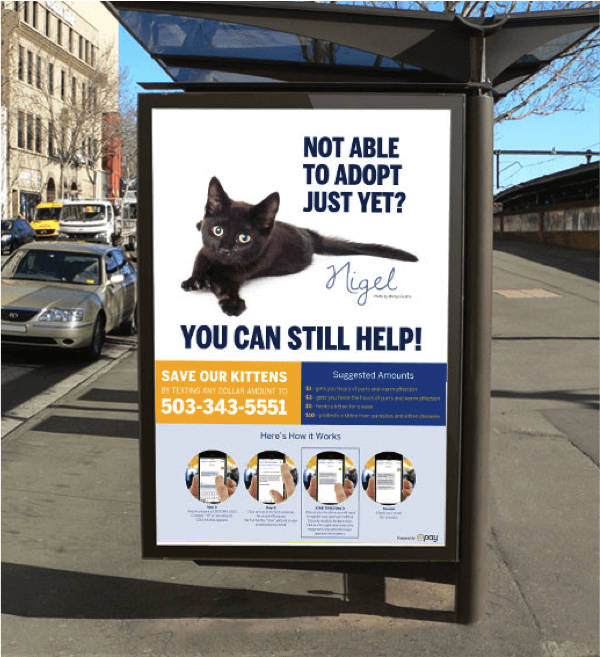
You’re intrigued. But your bus comes a little early. So you don’t have time to take down that number.
Luckily, you see this Facebook post that your friend has “liked” later on that week:
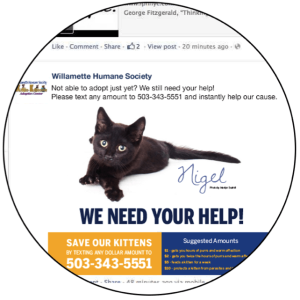
This nonprofit has reached out in several different ways, so they’re reaching the same donors more than once as well as new, potential donors.
Major Takeaway: Giving your donors more than one chance to learn about your mobile fundraising campaign will increase the likelihood that they’ll donate.
#7. Remember to thank your donors.
This is a total no-brainer, but it still bears mentioning.
Thanking your donors provides you the opportunity to market to your donors when they’re in the best possible mood.
They’re glowing from your praise.
You’ve addressed them personally.
You’ve included details about their specific contributions, and you’ve made sure to mention how their efforts or donations have positively impacted your cause.
You’ve thanked them (more than once).
Now is an ideal time to let them know about your upcoming mobile fundraising plans.
Chances are, once they know that they can text-to-give or give easily straight from an email, they’ll be excited to try out this new way of donating.
Voila! You’ve got a recurring donor!
Major Takeaway: A well-written thank you letter can mean the difference between a one-time donor and a recurring supporter.
—
You can’t hope to have a successful mobile fundraising campaign if you don’t pour time and energy into marketing.
My hope is that you take these seven tips to heart and go out there and launch one of the most notable mobile fundraising campaigns of the decade.
I would also love to hear from you. Reply in the comments with answers to the following questions: What’s worked for your nonprofit? What are some best practices you’ve picked up along the way? How have you marketed your fundraisers in the past? How are you planning to market them in the future? Has this article inspired you to do anything differently?
About the author: Wauker Matthews is Director of Sales at @Pay, an exciting new fundraising technology that makes it easy for people to give in just a few clicks from text, email, web and social media. Wauker has been in brand & business development for over 8 years, helping organizations grow in both size and reach.
